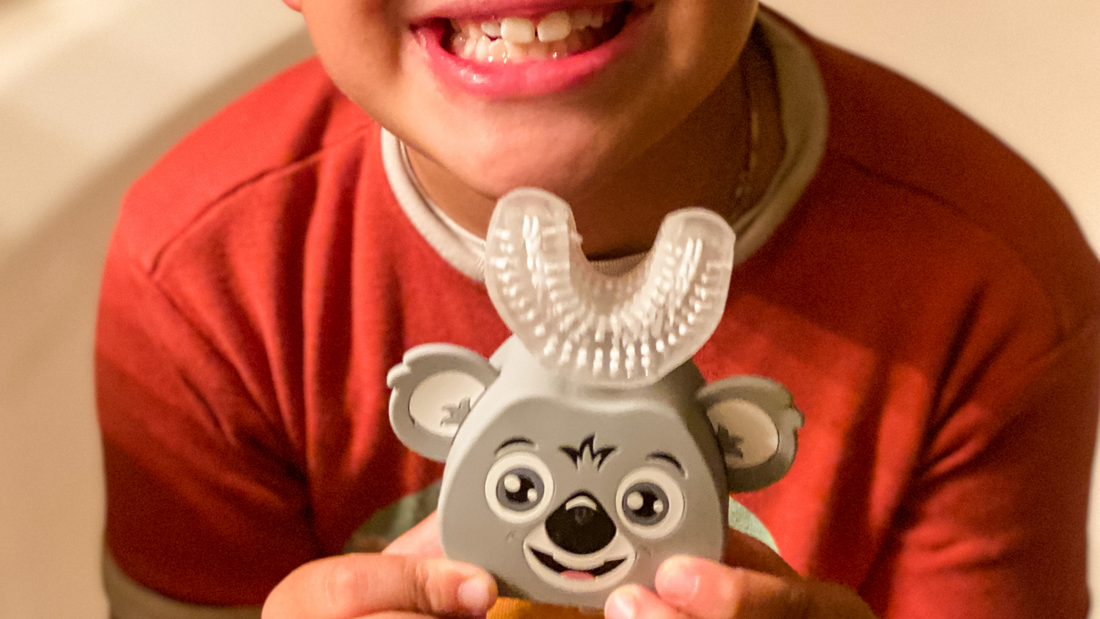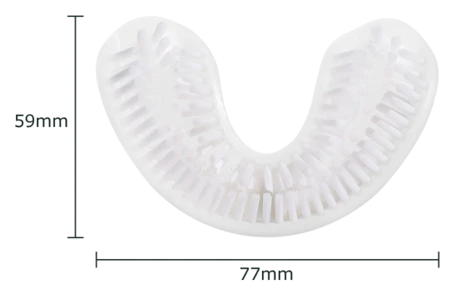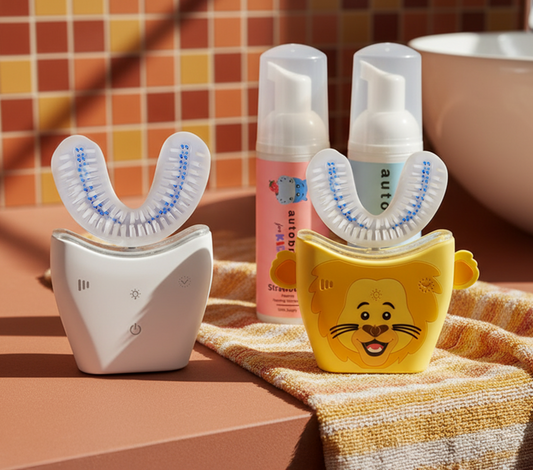
The Power of Mouthpiece Toothbrushes
In the ever-evolving landscape of oral care, new innovations are continually emerging to enhance our dental hygiene routines. One such innovation that has garnered attention is the mouthpiece toothbrush. These devices promise a revolutionary approach to oral hygiene, boasting unique designs and purported benefits. In this blog, we will look into the effectiveness of mouthpiece toothbrushes, their proper usage, their suitability for sensitive gums, and their appropriateness for kids. Additionally, we will explore the best options available in the market and how to choose the right one for you.

Are Mouthpiece Toothbrushes Effective?
Mouthpiece toothbrushes have captured the interest of both consumers and dental professionals alike due to their claims of enhanced effectiveness. These brushes typically come in a u-shaped design, allowing them to fit comfortably over the teeth and gums. This design aims to optimize the brushing angle and ensure that all surfaces of the teeth are thoroughly cleaned. Some studies suggest that this approach can be more effective at removing plaque and preventing gum disease compared to traditional toothbrushes.
Nevertheless, as is common with innovative products, perspectives on mouthpiece toothbrushes differ. While clinical trials have demonstrated potential benefits, the effectiveness of a mouthpiece toothbrush hinges significantly on its design. Notably, those equipped with silicone bristles have been found to be disappointingly ineffective, akin to neglecting oral hygiene altogether. Conversely, mouthpiece toothbrushes employing nylon bristles, such as AutoBrush, have undergone clinical validation, showcasing an impressive 27x better improvement in cleaning efficacy compared to conventional manual toothbrushes.

How to Use a Mouthpiece Toothbrush: Step-by-Step Guide
Using a mouthpiece toothbrush may seem unfamiliar at first, but it's relatively straightforward once you get the hang of it. Here's a step-by-step guide to using a mouthpiece toothbrush effectively:
-
Apply Toothpaste: Apply a pea-sized amount of toothpaste to the bristles of the mouthpiece.
-
Insert Mouthpiece: Gently place the mouthpiece over your upper and lower teeth. The u-shaped design should comfortably encircle your teeth and gums.
-
Turn On and Brush: Activate the toothbrush according to the manufacturer's instructions. The bristles will oscillate or vibrate, providing a thorough cleaning experience. Use gentle pressure and let the brush do the work.
-
Brushing Technique: Keep your lips closed and breathe through your nose while brushing. Slowly move in a circular motion, as well as side to side, to ensure the bristles reach all surfaces of your teeth.
-
Rinse and Clean: After brushing, remove the mouthpiece and rinse it thoroughly with water. Clean the brush according to the manufacturer's recommendations.
-
Regular Maintenance: Just like traditional toothbrushes, replace the mouthpiece's bristles or brush head as recommended, usually every three months.

Choosing the Best Mouthpiece Toothbrush for Sore Gums
For individuals with sensitive or sore gums, selecting the right mouthpiece toothbrush is crucial to maintaining optimal oral health without causing discomfort. Here are some features to consider:
-
Soft Bristles: Opt for a mouthpiece toothbrush with soft, nylon bristles to minimize irritation to your gums.
-
Adjustable Settings: Look for models with adjustable brushing settings, allowing you to control the intensity of the brushing action.
-
Gentle Modes: Some mouthpiece toothbrushes offer specific modes designed for sensitive gums. These modes deliver a milder brushing experience while still effectively cleaning your teeth.
-
Pressure Sensors: Certain models come with pressure sensors that alert you when you're applying too much pressure, preventing accidental gum damage.
-
Consult Your Dentist: Always consult your dentist before making a decision. They can provide personalized recommendations based on your oral health needs.
Mouthpiece Toothbrushes for Kids: Are They Suitable?
When it comes to oral care for kids, convenience and effectiveness are key considerations. Mouthpiece toothbrushes can offer benefits for children, but careful selection is necessary:
-
Age-Appropriate Models: Some mouthpiece toothbrushes are designed specifically for kids, with smaller sizes and vibrant colors to make brushing more appealing.
-
Ease of Use: Choose models that are easy for kids to handle and operate, ensuring they can maintain their oral hygiene routines independently.
-
Educational Features: Certain mouthpiece toothbrushes for kids include interactive apps or timers to make brushing a fun and engaging activity.
-
Supervision: While mouthpiece toothbrushes can be beneficial for kids, supervision is still important, especially for younger children, to ensure they are using the device correctly.
AutoBrush: The Best Mouthpiece Toothbrush
When it comes to embracing the future of oral hygiene, AutoBrush emerges as the epitome of innovation and effectiveness. Standing as the pinnacle of mouthpiece toothbrushes, AutoBrush redefines oral care routines. With a dedication to research and development, AutoBrush's nylon bristle technology has been clinically proven to outshine traditional manual toothbrushes by a remarkable 27 times. This accolade showcases AutoBrush's commitment to not only pioneering change but also delivering tangible results for those seeking a superior dental hygiene experience. Say goodbye to outdated methods; AutoBrush is here to usher in a new era of oral wellness.
To Recap
In conclusion, mouthpiece toothbrushes present a novel approach to oral care, with the potential to provide thorough cleaning and improved brushing angles. However, their effectiveness depends on various factors.These devices can be particularly useful for individuals with sore gums, as long as the right features are considered. Moreover, mouthpiece toothbrushes designed for kids can instill good oral hygiene habits from a young age.
As you explore the world of mouthpiece toothbrushes, remember that proper technique, regular dental check-ups, and a balanced oral care routine are the cornerstones of a healthy smile. With the right information and considerations, you can make an informed decision about incorporating a mouthpiece toothbrush into your oral care regimen.












